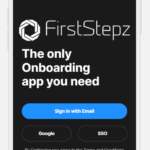Introduction to Exceptional Onboarding Practices
Employee onboarding is a crucial phase in the employee lifecycle. It sets the tone for an employee’s experience within the company. Successful companies understand that onboarding is more than a day-one orientation; it’s a comprehensive process that can significantly impact employee retention and satisfaction.
1. Pre-Boarding Engagement
Even before their first day, employees should feel connected to the company. Successful companies often send out welcome packs, set up their email accounts, and provide access to the company’s social platforms to get them engaged with the team.
2. Structured Onboarding Programs
A well-structured onboarding program extends beyond the first week. Top companies have a 30-60-90 day plan to help new hires understand their roles and expectations clearly.
3. Mentorship and Buddy Systems
Assigning a mentor or a buddy from within the team can help new employees navigate the company culture and build internal networks. This peer support is invaluable for their integration into the company.
4. Customized Training Sessions
Successful companies recognize that one size does not fit all in training. They offer customized training sessions that are tailored to an individual’s role and prior experience.
5. Clear Communication of Company Values
From day one, successful organizations communicate their core values and mission. This helps new hires align their personal goals with the company’s objectives.
6. Feedback and Open Communication Channels
Encouraging new employees to give and receive feedback is crucial. Companies that excel in onboarding have systems for regular check-ins and solicit feedback on the onboarding experience itself.
7. Integration with Team Projects
Successful companies get new hires involved with team projects early on. This involvement helps them feel like a contributing member and accelerates their learning process.
8. Social Integration Events
Organizing social events can help new employees build relationships within the team. Whether it’s a lunch out or a team-building activity, these events are important for fostering a sense of belonging.
9. Use of Technology in Onboarding
Leveraging technology can streamline the onboarding process. From digital paperwork to online training modules, technology can make the process more efficient and engaging.
10. Continuous Improvement of Onboarding Processes
Finally, the best companies know that there is always room for improvement. They regularly review and update their onboarding processes based on feedback and changing needs.
Conclusion: Onboarding as a Foundation for Success
The onboarding process is the foundation upon which employees build their careers within a company. Successful companies understand that an effective onboarding experience is key to employee productivity, engagement, and retention. By implementing these ten strategies, organizations can ensure that their onboarding process contributes to a positive work culture and a sustainable future.






